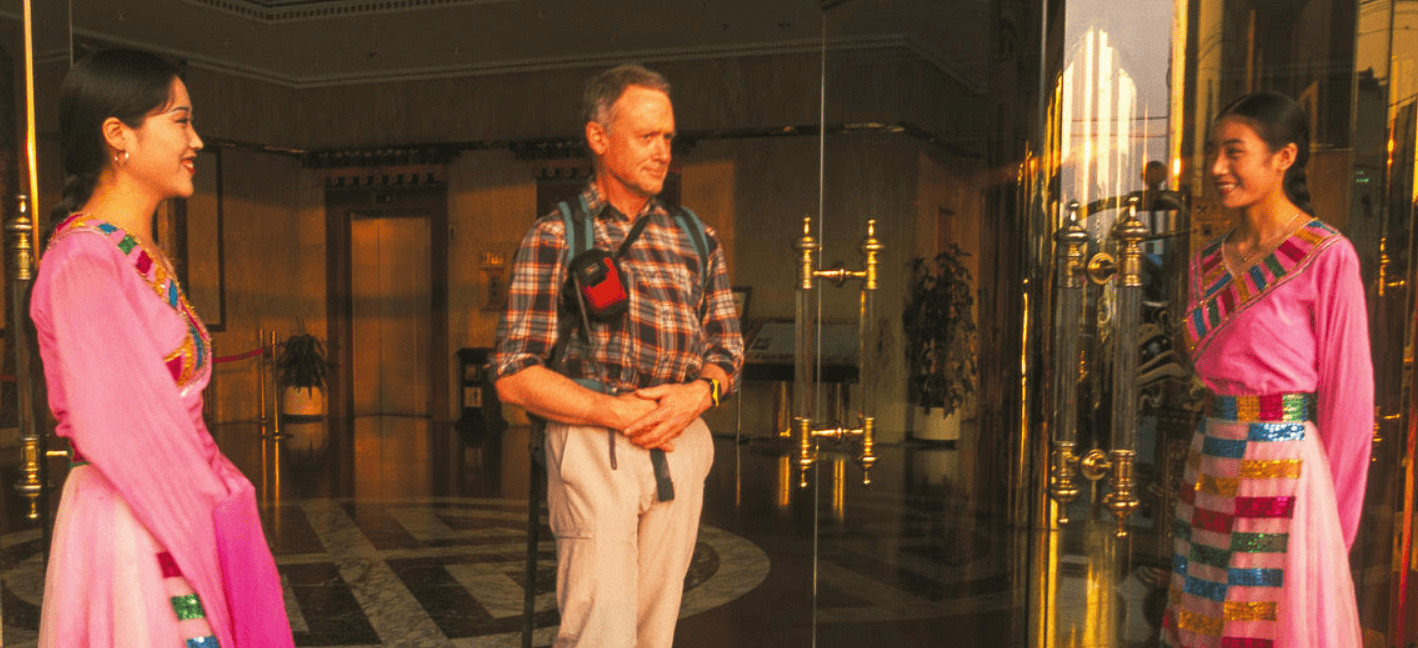Remembering John Nankervis 1946-2022

When I bring Nank to mind we are always laughing, often uncontrollably. He is crouched pixie-like on a low table in a Wellington bar, stomping tongue-extended in a Maori haka through Dave Bamford’s kitchen, or skipping nimbly along the edge of a city pavement in his lawyer’s dark suit.
I don’t remember why, probably to delight my young sons, or to embarrass me, or to irritate Dave -- or just mischievously to push the limits of staid behaviour.
Sometimes Nank is with fellow Kiwi climbers pre- or post-expedition in a scruffy guesthouse in downtown Kathmandu, discussing the finer points of summit ascents with Elizabeth Hawley on the unforgiving chairs of her Dilli Bazar sitting room, or lolling on my yellow veranda sofa in our Budhanilkantha home whilst I fend off questions about my husband.
But John Nankervis was a serious man, beneath the banter and his protective cloak of humour. Behind the legendary prankster, friends who knew him much better than I will remember his lifelong commitment to justice, his work to preserve the environment, his passion for natural history, and his deep love of mountains and mountaineering which so cruelly got him in the end. His enquiring mind, rigorous reading, thoughtful analyis and innate curiosity made Nank worth listening to on any topic.

Whilst his emails were laugh-out-load funny, rife with innuendo, clever nicknames, Nepali slang and word play, he was always seeking to learn something new. Whether it was Himalayan climbing history, alpine club details, plans for often-obscure peaks in Nepal, Sikkim, Tibet or Pakistan, exchanging articles or sourcing traditional paintings from the Khumbu, like his conversation Nank’s messages never wasted a precious moment and were never ordinary.
Nank’s climbing record both at home and around the world extends over a 50-year period. It includes all New Zealand 3,000m peaks and over 50 first ascents in the Southern Alps and overseas. His first expedition to the Himalaya was in 1981 where he completed a dozen major climbs and over 20 ski mountaineering trips.
He also climbed in Antarctica, Afghanistan, Uzbekistan, Kazakhstan, Mongolia, Norway, Myanmar and South America. Twice Nank declined invitations to join expeditions to Mt Everest, preferring to pioneer off-the-beaten-track adventurous and less high profile peaks.

Widely recognised, publicly awarded and much admired, he served as President of the New Zealand Alpine Club, on the Tongariro-Taupo Conservation Board, New Zealand Conservation Authority, and for ten years represented New Zealand at the UIAA (International Climbing and Mountaineering Federation). In 2010 he was made a member of the New Zealand Order of Merit for services to mountaineering.
A Wellington-based lawyer by profession, Nank’s real passion was for the great outdoors, exploration, mountain clubs and conservation. Although he joined the legal profession to please his mother, Dave Bamford reckons he should have been a natural scientist, following in the footsteps of his famous grandfather, Ernest Marsden, a prominent professor of physics in the field of radiation and nuclear sciences whose work led to the discovery of the structure of the atom.
In 2013, Nank broke his back in a freak climbing accident on Mt Awful in the Mount Aspiring National Park. Confined to a wheelchair, the accident brought out hidden depths of courage and resilience, un-contemplatable for most of us.

I prefer not to recall his struggles of the last decade, pain etched into his face, the relentless cheerful bravado, salvaged by the amazing band of faithful friends who tended him so tirelessly, wheeling him to parties, theatres, symphonies and endless medical appointments.
Instead, here he is, brandishing an ice axe upside down (health and safety regulations) leading the New Zealand Alpine Club guard of honour for Sir Edmund Hillary’s coffin as it leaves Auckland cathedral after the state funeral. By some quirk of fate both these NZers departed on the same date, 11 January, although 14 years apart.

For an Everest book, I recently asked Nank how he would define the Sherpa people in a few words. It occurs to me that his reply – ‘loyal, tough, tenacious, fun-loving’ -- would do quite well for him. I’d probably add ‘modest’ to the list, but his friends may not agree.
I’m just very glad to have known him at all -- and blessed to have been touched by such a remarkable and vibrant life. So thank you, Bammy Bamaphone, for that. And farewell Nank, we will miss you.




